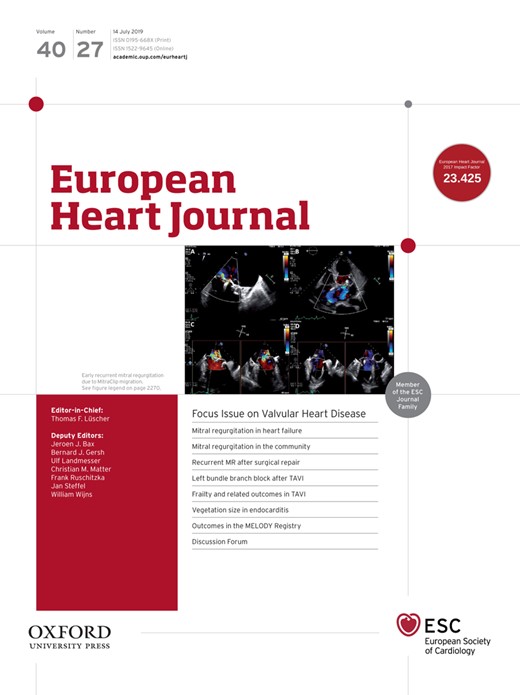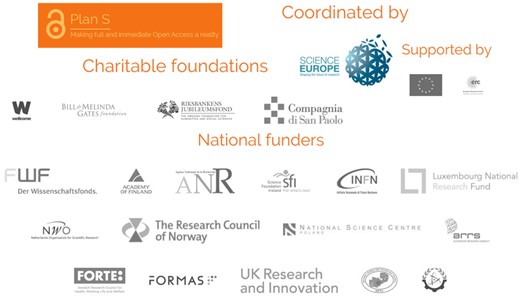-
PDF
- Split View
-
Views
-
Cite
Cite
Thomas F Lüscher, The Biomedical Alliance Spring Meeting on Plan S, European Heart Journal, Volume 40, Issue 27, 14 July 2019, Pages 2177–2179, https://doi.org/10.1093/eurheartj/ehz492
Close - Share Icon Share
The Biomedical Alliance in Europe organized its Spring Meeting on May 14, 2019 at the Square de Meeûs, Brussels, Belgium. The day was chaired by Professor Axel Pries, Biomedical Alliance Officer and Dean of the Medical Faculty of the Charité in Berlin

The main session in the morning on Challenges and Opportunities of the EU-S Open Access Plan chaired by Wilfrid Ellmeier and Chantal Marthieu began with a lecture by Robert Kiley, Head of Open Science at the Wellcome Trust, London, UK.
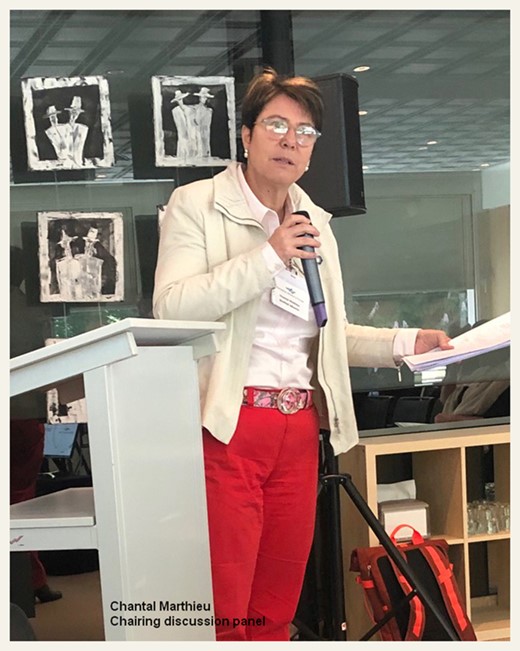
The keynote lecture
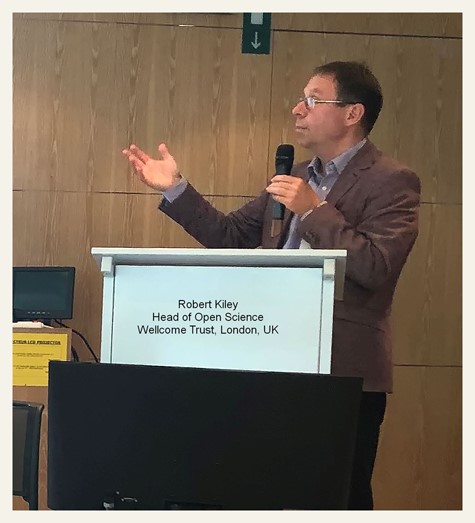
Robert Kiley is a strong proponent of Plan S and in his lecture outlined the major features and his perspective is a new European-wide strategy that should change scientific publishing at large. He stressed the main principles of Plan S, i.e.
No publication should be locked behind a paywall,
Original articles must be immediately available, i.e. no embargo periods,
Publication under an open license; no transfer/licensing of copyright,
Transparency of pricing and contracts, and
No hybrid models of publication should be allowed, except as a transitional arrangement with a clearly defined endpoint.
Obviously, this means that scientists who receive funding from supporting institutions (Figure 1) will no longer be allowed in non-open access journals such as the New England Journal of Medicine, Lancet, and the European Heart Journal, just to mention a few. However, they may (or rather must) publish their work in any fully open access journal or platform which is registered in the Directory of Open Access Journals. Of note, it would be allowed to publish in any subscription journal, where the researcher has the right to make freely available, through a repository, the author accepted manuscript at the time of publication with CC BY licence and/or in any subscription journal where the publisher has negotiated a ‘transformative OA agreement’ (as specified by Jisc Collections/Efficiency and Standards for Article Charges, or equivalent) and the researchers’ host institution has ‘subscribed’ to that deal.
However, Plan S supporters such as Robert Kiley have broader policy ambitions: First, they want all research openly accessible without delays and further they want to accelerate the transition to open access. He mentioned that they have supported hybrid journals for more than a decade but noted little evidence for a transition to complete open access. In his mind, cOAlition S is the first attempt by funders to develop shared principles and common policies of publishing allowing for no exception.
cOAlition S organized a consultation about Plan S and received over 600 responses. While apparently, they did receive mainly strong support for open access, important concerns were raised by many regarding the tight timelines for transition (i.e. 2020), capping Article Processing Charges, technical requirements for journals and repositories may be too onerous, that licence requirements may not be suitable for all researchers and related to the impact Plan S has on small publishers (especially learned societies such as the European Society of Cardiology among others).
In response to these concerns, a Task Force, chaired by John-Arne Røttingen and David Sweeney, and comprising Experts from cOAlition S members—have reviewed the feedback and will have published this this summer and communicate widely to funders such as Wellcome, among others and will update its new open access policy to reflect the new guidance. He acknowledged that many, particularly the most prestigious journals do not offer routes compliant with cOAlition S. Therefore, he promised an ongoing dialogue with the scientific community. Indeed, limiting publication options will disadvantage cOAliltion S-funded researchers (see Figure 1), especially European Research Council (ECR) grant recipients and threaten international collaborations. However, he argued that what one publishes would be more important and not where one publishes; a statement that may not be convincing to many working in institutions where recognition and promotion depends as much on the latter as on the former.
Indeed, in many European Universities, the impact factor and prestige of a journal in which the work is published is considered crucial for promotion and granting. Robert Kiley was convinced that international groups may still want to collaborate with world class researchers bound to be compliant with cOAlition S. However, it is still unclear what position the National Institute of Health in the U.S. and the prime U.S. journals will take. Of note, the New England Journal of Medicine2 as well as the European Heart Journal3 just recently published critical viewpoints on the issue.
Furthermore, some respondents to the consultation/survey of cOAlition S were arguing that they it takes away their academic freedom. Against that Robert Kiley stressed his position that there is also a responsibility to ensure that research can be accessed and reused without restrictions.
Finally, the consultation or survey revealed that learned societies such as the European Society of Cardiology amongst others, will suffer economically from Plan S, or their financial existence will even be threatened. Indeed, many learned societies offer free access to their journals through the membership benefits. In this regard, Robert Kiley promised to consider other ways to support learned societies, that no longer rely on hidden subsidies, paid through library subscriptions. They have already asked library consortia about their willingness to work with Learned Society Publishers and apparently 91% of those asked agreed that they look forward to working with learned society publishers to develop new models of support.
Panel discussion
After this introductory lecture, there was a round table discussion, consisting of Jean-Claude Burgelman, Head of Unit Open Data Policies and Science Cloud of the European Commission; Prof. Thomas F. Lüscher, Editor-in-Chief of the European Heart Journal; Valentina Tursini, Scientific Publications Director of the European Society of Cardiology; Professor Laszlo Fesus, Chair of the FEBS Publications Committee. Each of the panellists had a 10-min timeslot for comments.
Jean-Claude Burgelman began by supporting the position of Plan S as outlined by Robert Kiley and underlying the determination of the European Union to go ahead with Plan S by 2020. He argued that with the change in system from the subscription model to complete open access, the money currently going to publication companies for content behind a paywall would indeed shortly be directed to fund open access content that would benefit the scientific community at large.
The fact that some publishing companies make enormous profits by publishing papers funded by governmental agencies or charities, such as the Wellcome Trust, the British Heart Foundation, or the European Union, just to mention a few, without contributing to the science itself was heavily discussed by several participants and most agreed that this is against the academic spirit of science.
Thomas F. Lüscher then took a counter position by supporting the hybrid publication model as the optimal way of providing high quality scientific papers to readers. Indeed, he stressed—as outlined in a recent article1—that today where more than a hundred thousand journals publish millions of papers, proper peer review with a selection of the best scientific papers is a true need and essential to move science forward and provide innovation. Unfortunately, optimal management of peer review and editorial processes is costly and would require substantial submission rates with an open access publishing strategy. Indeed, large, successful, as well as influential journals, such as the New England Journal of Medicine, the Journal of the American Medical Association, Circulation, and the European Heart Journal, just to mention a few, have large editorial offices with from 5 up to even 30 employees, assuring proper manuscript structure, compliant submission of all the documents and a selection of competent reviewers in the field of science covered by the submitted work.
Furthermore, large journals also have a statistical team and, indeed, statistical editors—contrary to scientific reviewers—do require financial renumeration for their work, as do designers providing figures, as well as news and press officers who are part of high impact journals.
Open access journals currently charge between 1500 and 3500 Euros per paper and if the above-mentioned large journals would move completely to open access—which as recently outlined in the New England Journal of Medicine2 is not at all certain—charges per manuscript would need to be much higher than that, to allow for covering the costs.
As Professor Lüscher pointed out, this would be a big hurdle for scientists from countries with less developed economies and indeed would discriminate against scientists and physicians that are not endowed with large grants or publication support by their universities. The editor-in-chief of the European Heart Journal ended with a firm statement that hybrid journals are providing both the advantages of the subscription model by providing appropriate structures and personnel resources to run a high-impact journal and the features of open access by providing rapid and excellent dissemination of the result.
For example, the European Heart Journal publishes about a third of its original research papers on open access and also the highly popular ESC Guidelines among others. Finally, after 12 months, all articles become free to access. With 10 million downloads every year the European Heart Journal contributes more to the distribution of science and education than most open access journals.
Valentina Tursini discussed the scientific publishing community’s commitment to open science to increase the dissemination of scientific and medical knowledge and to leverage text/data mining to generate new insights and raised the issue of libraries struggling to meet the costs necessary to access the increasingly large number of research articles generated every year under the current model.
However, she stressed the danger in rushing for change without carefully assessing threats and possible unintended consequences, such as the risk of a shift from quality to quantity in order to maintain revenues, impact on European research competitiveness and dissemination, and the limitation that such policies would impose on international collaboration. Most importantly, she asked whether the community is simply replacing one paywall with another and transitioning from a paywall to read to a paywall to publish.
The perception currently is that transformative agreements (‘Read and Publish’ or ‘Publish and Read’) being negotiated at the national level with publishers may be a solution to ensure a careful transition. These deals are mainly being negotiated by northern European countries and the US and could position these countries to become fully Open Access in the near future. She raised the question of whether the community may be forcing the flow of knowledge production and dissemination in one-direction and creating an ugly divide, with the global north being able to read and publish Open Access, and the global south left to read without means to contribute to science via publication and international collaboration.
In the discussion several editors-in-chief of journals of learning societies reminded the audience that their journals are commonly the only membership benefit that their societies provide. As such, open access would destroy this concept and endanger the existence of such scientific societies. Several others discussed the costs and reiterated the potential collateral damage of a rapid change to a complete open access system.
In summary, therefore, the Spring Meeting of the Biomedical Alliance in Europe provided an ideal platform to discuss scientific publishing in the future and provided insights to the complexity of this activity with many interdependences that have to be considered when moving forward in this area.
At the end of May 2019, cOAlition S provided a response to the feed-back they received from more than 600 individuals and organizations on the implementation of Plan S. Their response was, ‘With effect from 2021, all scholarly publications on the results from research funded by public or private grants provided by national, regional, and international research councils and funding bodies, must be published in Open Access Journals, on Open Access Platforms, or made immediately available through Open Access Repositories without embargo’.
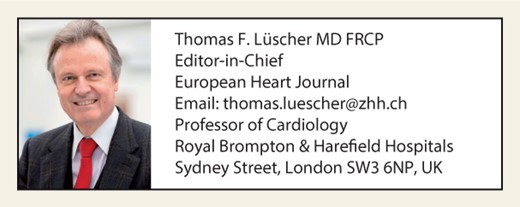
Conflict of interest: none declared.
References
References are available as supplementary material at European Heart Journal online.


